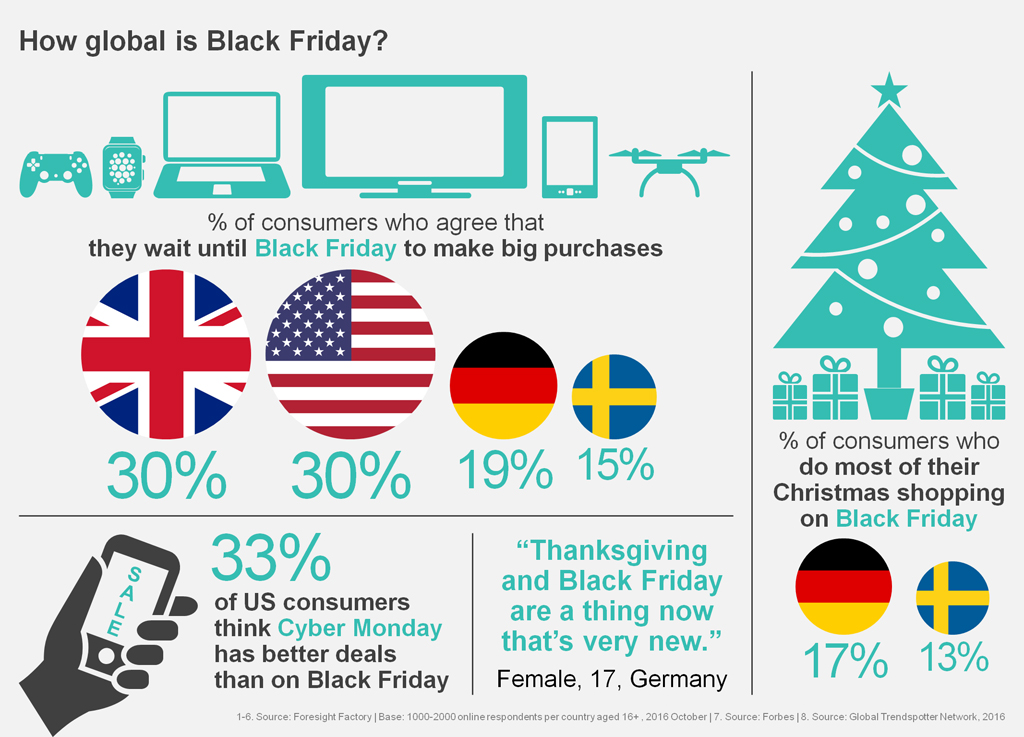The future for Black Friday online
Once a shopping tradition uniquely American, Black Friday and Cyber Monday have become increasingly global. In fact, the same amount of American and UK shoppers agree that they wait until Black Friday to make big purchases. Germany and Sweden are a few other countries that have begun participating in the event as well, with 17% of German and 13% of Swedish consumers stating they do most of their Christmas shopping on Black Friday. It’s clear that despite this American import being fairly new, consumers from all around the world have begun to anticipate these days filled with super savings – cars and computers at the ready to grasp the best deal. So in preparation for this retail highlight and its growing global impact, here are a few Black Friday and Cyber Monday insights from the country where it all began:
Americans want their time saved as much as they want their wallet full. I always found it strange to see footage of shoppers camped outside, waiting hours and hours to score a Black Friday deal. This is more myth than reality. From personal experience, the stores aren’t nearly that busy and if they are, my grandma and I book it out of there. Time maximization is becoming more and more of a priority, especially when the alternative is to purchase online and on the go. 39% of Americans feel they are often under time pressure in their everyday life and that percentage jumps significantly to 56% for millennials. The cost of delay has a clear impact on the path to purchase – in the past six months, 22% of consumers have given up buying something while shopping in a store because the line was too long. 47% of consumers gave up on an item because they changed their minds, which you can imagine, may have to do with the opportunity to reconsider their choices… while queueing to pay. Time is money, and Black Friday is no exception.

In an age that demands convenience, Black Friday’s in-store deals and Cyber Monday’s online bargains often overlap. Popular companies such as JCPenney offer both in-store and online coupons, leveraging the consumers who use cross-channel methods when shopping 40% of the time. For example, many consumers research online and end up going into the store to try on or see the product in person, ultimately buying it there and vice versa. Target has also taken advantage of Versat-aisle shoppers (our trend that describes this behaviour), offering a service called Gift Now which allows gift-givers to send their presents via email instead of by mail. By offering deals both online and in-store, companies maintain relevancy in a world where omnichannel shopping is the new normal.
What do we see as the future for Black Friday online and globally? For one, we are likely to witness a steady surge in online sales instead of in-store shopping, at least until the physical experience keeps up with the demand for omnichannel shopping. If we compare a similar pinnacle in the UK retail calendar such as Boxing Day, figures from an independent study by Retail Research reported a 12.9% rise in online sales, making up 27% of all retail sales (which only grew 1.9% from 2015). As there is already as much emphasis on Cyber Monday as there is on Black Friday, it will be interesting to see if global adoption continues to mimic the American model or paves it’s own way.